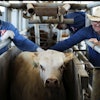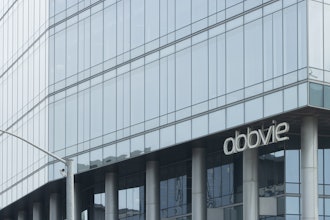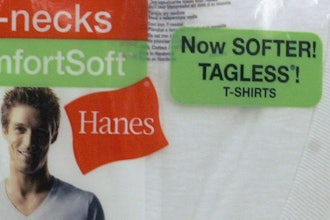
This article first appeared in the September 2013 issue of Food Manufacturing.
Over the past several years, the economic recovery has presented a multitude of challenges for businesses across the U.S. These challenges have been significant for those in the food and agribusiness sector. Crop, feed and fuel price volatility has impacted margins and has been difficult to hedge and manage. The effects of immigration laws and their impact on the availability of qualified labor have impacted the bottom line as well.
Economic times are challenging many businesses today. Capital investment in new plant, storage and transportation equipment is essential to maintain the competitive edge. As such, liquidity and access to low cost sources of capital are critical to current and long-term growth.
Equipment finance companies provide flexible solutions to meet unique business needs. For many, acquiring equipment through leasing or other financing methods is more flexible and customizable to meet specific business needs than other more traditional funding options.
Equipment Finance is a $725 billion industry in the United States. Over one-third of all equipment acquired in 2012 was financed through a lease structure. There are a number of criteria which contribute to the lease vs. buy decision. Most equipment finance companies have established cost effective and competitive loan and lease solutions which meet the increasing focus on preservation of working capital and efficient cash flow utilization.
Leasing is often the most flexible cost-effective answer to today’s equipment financing requirements, and working with an experienced lessor who can tailor financing solutions to a client’s specific goals is essential to the process.
Elizabeth Hund, Business Head of U.S. Bank Food Industries, states “clients in the food manufacturing and distribution sector see the utilization of leasing structures as an important piece of managing the balance sheet. In particular, they are attracted to the flexibility and the tax advantages of leases as compared to other forms of financing equipment.”
Is Leasing Right for My Company?
There are four primary criteria which every organization should evaluate when making a lease vs. buy decision. An evaluation establishing the relative cost efficiency of using equity capital (cash) to acquire capital equipment vs. low cost finance or lease alternatives. The cost of equity can be very expensive for acquiring equipment versus its deployment or utilization in areas which would provide a more cost effective return on net investment. A company that acquires capital equipment should consider leasing as a financing alternative. The most compelling reasons typically fall into one of the following four categories.
Tax Management and Efficient Tax Benefit Optimization
In a tax lease, the lessee shifts the tax benefits related to ownership from the equipment acquisition to the lessor for favorable payments and more flexible tax management and tax benefit optimization. Depending on the lessee’s specific tax situation, this lease feature can significantly lower the total cost of the equipment acquisition. In particular, this can be very apparent to Agriculture Cooperatives structured under Section 521 of the IRS Code. As the tax is typically paid at the patron or member level, the tax benefits related to equipment acquisition may become diluted and can often be optimized with a lease finance solution.
The tax timing of equipment acquisitions can be critical as well. As an example, if more than 40 percent of a company’s capital equipment is acquired in the fourth quarter of its tax year, the depreciation related to those assets fall victim to mid-quarter convention rules, significantly impacting the acceleration of the depreciation deductions. Sale-leaseback structures can provide companies with net operating losses (NOLs) an effective means of recapitalization of equipment while utilizing available NOL carry-forward balances as an efficient tax optimization strategy.
Balance Sheet Strategies
Unlike most methods of equipment financing, a lease can be structured to keep the obligation off the balance sheet, preserving financial ratios in the form of an operating lease. An operating lease can assist lessees in managing to financial covenant requirements including those related to industrial revenue bonds.
While there is a current movement in the accounting arena to modify lease accounting rules, the process between the IAS and FASB has been slow and arduous. In the past several years, they are still working to establish an acceptable alternative. At best, if current proposed changes are embraced and adopted, the general consensus is that the deployment would take three or more years to implement. In the meantime, many companies are continuing to utilize operating leases as a preferred financing alternative. Those who are managing to enhance shareholder value and financial performance metrics such as improvement to ROA, ROE and EVA all are utilizing operating leases as a viable strategy.
Equipment Obsolescence Strategy
For many types of equipment such as computers, data center storage, routers and switches, a lease can transfer the obsolescence risk to the lessor. In addition, equipment leasing can provide a company future flexibility as an organization’s equipment requirements change.
Cash Flow Strategy
For companies with a strong liquidity preference, a lease can provide significant benefit in the preservation of working capital and cash flow management. Leases and equipment finance loans provide:
- 100 percent financing with no down payment
- Efficient means of financing equipment installation related “soft costs”
- Flexible payment structures to match seasonal or budgetary requirements
- Interim funding arrangements can be utilized to manage vendor required terms
- Retention of a company’s operating line availability during equipment acquisition and build-out with interest only until lease or loan commences at the completion of the installation
Equipment financing provides the essential tools to create a capital funding alternative which can assist a CFO in managing to a number of complex criteria when considering equipment acquisitions.
And leasing, if appropriately structured, can provide a low cost alternative to traditional financing. Comparisons based on the Net Present Value (NPV) of after-tax cash flows, efficient deferral of taxes, optimization of tax benefits and effective use of balance sheet management can provide a cost effective solution required to meet the increasing demands in remaining competitive in the marketplace.
For more information, please contact Paul Frisch at [email protected] or 503-797-0260 or Elizabeth Hund, Senior Vice President, Business Head, U.S. Bank Food Industries at [email protected] or (303)-585-4904.























